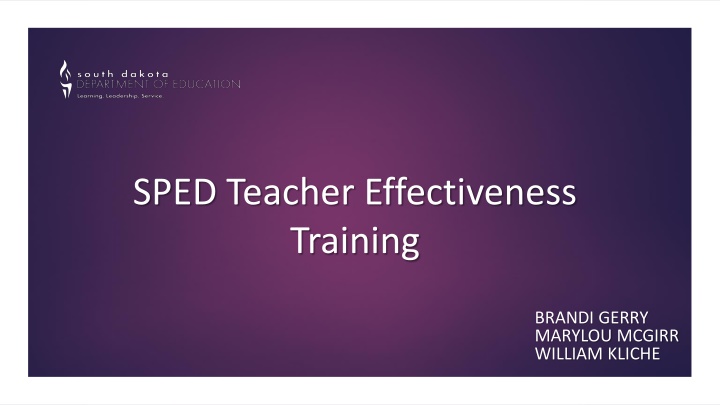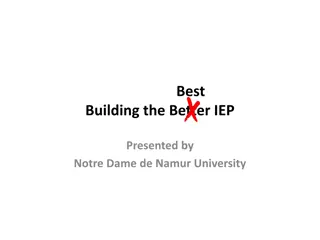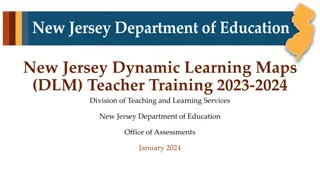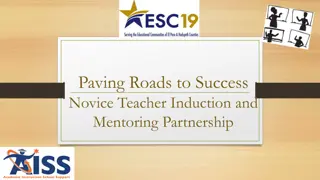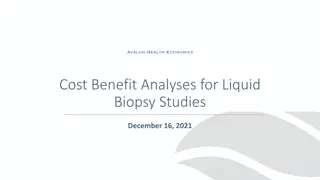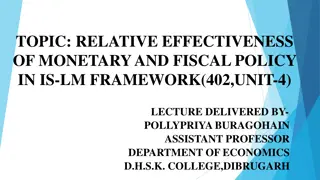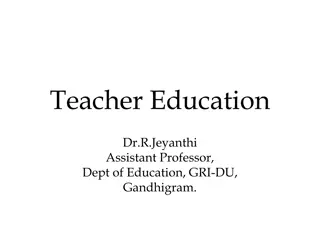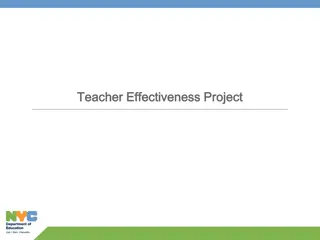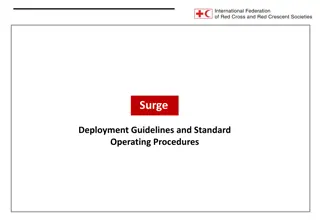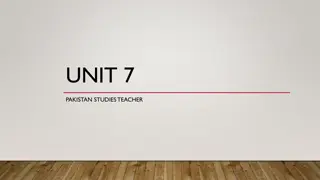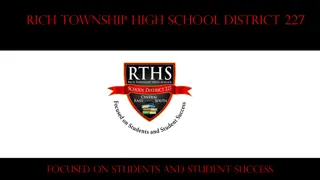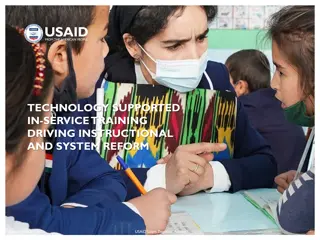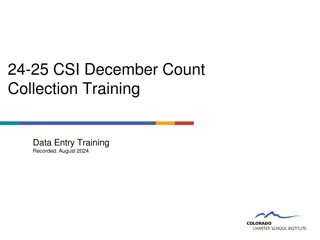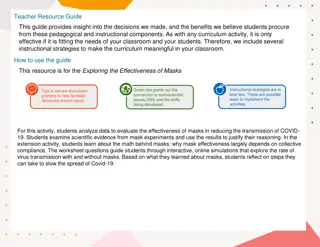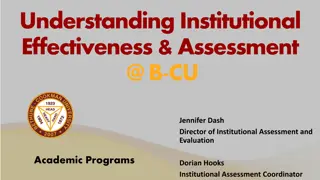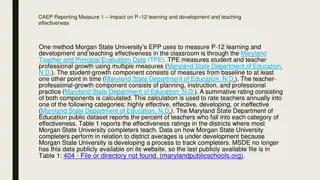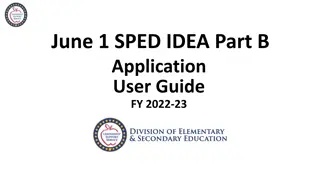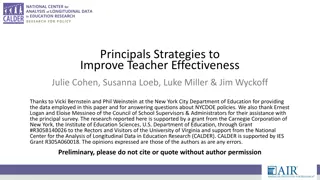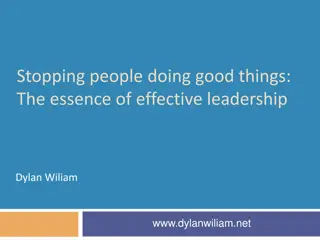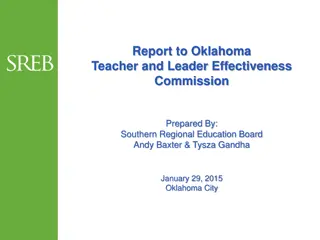SPED Teacher Effectiveness Training and Guidelines
This training focuses on enhancing special education teacher effectiveness by covering various aspects such as the SD Teacher Effectiveness Model, Student Learning Objectives, SPED scenarios in relation to the framework for teaching, SLO process, summative scoring matrix, one-year evaluation cycle, SPED Law/Guiding Principles, and considerations for developing SLOs for students with disabilities.
Download Presentation

Please find below an Image/Link to download the presentation.
The content on the website is provided AS IS for your information and personal use only. It may not be sold, licensed, or shared on other websites without obtaining consent from the author.If you encounter any issues during the download, it is possible that the publisher has removed the file from their server.
You are allowed to download the files provided on this website for personal or commercial use, subject to the condition that they are used lawfully. All files are the property of their respective owners.
The content on the website is provided AS IS for your information and personal use only. It may not be sold, licensed, or shared on other websites without obtaining consent from the author.
E N D
Presentation Transcript
SPED Teacher Effectiveness Training BRANDI GERRY MARYLOU MCGIRR WILLIAM KLICHE
Outcomes 1. Gain an understanding of the SD Teacher Effectiveness Model 2. Create an understanding of Student Learning Objectives 3. Develop an awareness of the SPED Scenarios in relation to the SD Framework for Teaching
SLO Process Low Growth: Growth goal is less than 65% attained. Expected Growth: Growth goal is 65%-85% attained. High Growth: Growth goal is 86% to 100% attained.
SPED Law/Guiding Principles A. SLOs should support the participation of students with disabilities in the general education curriculum to the maximum extent possible. B. SLOs should be developed in a way that holds all teachers accountable for the academic growth of SWDs. ARSD 24:05:13:02 Free Appropriate Public Education
SPED Law/Guiding Principles SLOs should support the participation of students with disabilities in the general education curriculum to the maximum extent possible. 1. SLOs should not be based on the attainment of IEP goals. 2. SLOs should focus on academic standards. 3. The structure of the IEP process can inform the development of SLOs.
Consideration 1: SLOs should not be based on the attainment of individualized education program (IEP) goals. Students with disabilities, when appropriate, should be instructed and assessed using the same college and career readiness standards as their general education peers. IEPs are legal documents designed to ensure individualized services to students with disabilities based on their needs. Including IEP goals within teacher evaluation systems may unintentionally move the focus away from the student. Position on Special Education Teacher Evaluation 2012 IDEA 2004
Consideration 2: SLOs should focus on academic standards. SLOs are written for content-area standards. Special education is not a content area. However, SLOs written to encompass special education populations may differ in their established learning targets AND the types of services and supports provided to students with disabilities to access the general education curriculum.
What About Functional Skills? There may be occasions in which an SLO needs to be written to address a functional skill, such as communication. In these infrequent instances, the SLO should: Address a skill critical to learning content Address a skill essential for showing what the student knows and/or can do related to the content Be instructed and assessed within the context of content-based activity(ies) Be written within any one of the 4 previous accountability models
Consideration 3: The structure of the IEP process can inform the development of SLOs. IEPs can be a source of evidence within the SLO process to document the types of services and supports that were provided to help students with disabilities achieve the standards. The IEP also may include documentation of student progress that could be a valuable source of evidence for SLOs. Don t forget related service providers!
Consideration 3: The structure of the IEP process can inform the development of SLOs. SLOs require: IEPs require Collection of baseline data A statement of present levels of performance Expected growth targets Expected growth and attainment Measurement of student progress Statement of progress monitoring measures Instructional strategies Supports and accommodations
SPED Law/Guiding Principles SLOs should be developed in a way that holds all teachers accountable for the academic growth of SWDs (ARSD 24:05:13:02 Free Appropriate Public Education) Special education teachers should use the same SLO template and process that is used by other teachers in the district. 4. In co-teaching situations, general education and special education teachers should collaborate to create SLOs. 5. SLOs for special education teachers must reflect the diverse education settings found in the continuum of special education services. 6.
Consideration 4: Special education teachers should use the same SLO template and process that is used by other teachers in the district. Potential SLO Differences Which standards? (ex: CCSS, other academic area, CCC) Progression of skills needed to access the curriculum? Grade-level of the curriculum Participation in gen ed assessments Matching instructional methods to SLO goals
Consideration 5: In co-teaching situations, general education teachers and special education teachers should collaborate to create SLOs. It may be appropriate for the general ed and special ed teacher to share the SAME SLO and results. Consider a TEAM SLO in this case.
Consideration 6: SLOs for special education teachers must reflect the diverse education settings found in the continuum of special education services. Consider: Interval of instruction Pacing Repetition, spiraling Frequency and/or intensity for supports
Target Group If you are writing an independent SLO consider your target audience. You want your SLO to reflect your instruction. Target audience should be students you significantly impact in that subject area. Example: If you work with a group of students daily in reading, they would be a good group to target in your SLO.
Prioritizing Learning Content Prioritize Learning Content: Identify standards and content. What is the most important learning that needs to occur during the instructional period? Specify which standard(s) the SLO addresses and Identify the specific data source or trend data used. (1a) STATE STANDARDS FOR YOUR STUDENTS GRADE LEVEL CORE CONTENT CONNECTORS (if applicable)
Identify Student Population Identify the Student Population: Describe the context of the class. How many students are addressed by the SLO? Detail any characteristics or special learning circumstances of the class(es). (1b, 1c) SHARED WHOLE CLASS INDIVIDUAL YOUR STUDENTS
Interval of Instruction Interval of Instruction: Specify the time frame in which growth will What is the time period in which student growth is expected to occur? Identify the length of the course or provide rationale for a time period that is less than the full length of the course. SCHOOL YEAR SEMESTER
Analyze Data & Develop Baseline Analyze Data and Develop Baseline: Detail student understanding of the content at the beginning of the instructional period. Where are my students starting? Summarize student baseline performance and attach additional data if necessary. (1b, 1f, 3d) WHAT IS/ARE YOUR DATA SOURCE(S) WHERE ARE YOUR STUDENTS STARTING
Select or Develop an Assessment Select or Develop an Assessment: Describe how the goal attainment will be measured. What specific assessment or instrument will be used to measure goal attainment? Describe the source of the assessment and the connection to identified content and standards. (1c, 1d, 1f, and 3d) SAME AS CLASSROOM TEACHER? OWN ASSESSMENTS? Interval of instruction Pacing Repetition, spiraling Frequency and/or intensity for supports
Growth Goals are the HEART of the SLO They are S.M.A.R.T
S.M.A.R.T. Goals S M A R T Realistic & Rigorous The goal is attainable and stretches student learning. Specific The goal addresses student needs within the content. Measurable An appropriate instrument or measure is selected to assess the goal. Appropriate The goal is standards- based, needs- focused (and directly addresses all students in your target group) Time-bound A time frame is included in the goal (ex: year, semester).
Sample Growth Goal By the end of the year, students will move from below benchmark to at or above benchmark for the FSF (First Sound Fluency) and PSF (Phoneme Segmentation Fluency) DIBELS Next assessments. By the end of the unit, all 8 students in the class will score a 70% or higher on the end-of-unit assessment with no prompting. The students required accommodations will be used. NOTICE: Neither of these say, 80% of students will Why?
Focus on Growth When writing SLOs think about the growth desired. Keep the focus on the growth of all students, not the number of students achieving the goal.
Focus on Growth Amount of growth Students in my target group will move up by at least 1.5 grade levels in reading in the district reading assessment. Amount of students 80% of the students in my target group will test at level 4.5 or higher in the district reading assessment.
Growth Goals Class Mastery Differentiated Growth Shared Performance Based on quality baseline data and educator- determined definition of mastery. Goal is structured based on all students attaining mastery. Establishes tiered expectations for student growth for groups of students. The educators define what growth looks like for each group of students. Teams of teachers agree to work collaboratively and share responsibility/accountability for student learning for a content area, grade level, or school.
Growth Goal Class Mastery Growth Goal: Establish expectations for student growth. What can I expect my students to achieve? Establish rigorous expectations for student performance. (1b 1c) By the end of the school year, all students in reading group A will read grade-level material fluently (150 wcpm) with 5 or fewer errors. Strengths: Each teacher is accountable only for the students with whom he/she instructs Drawbacks: Can be challenging for teachers with very small case loads or class sizes Can be easier to calculate growth Requires all students to achieve at the same level (Realistic? Rigorous?)
Growth Goal Differentiated Growth Goal: Establish expectations for student growth. What can I expect my students to achieve? Establish rigorous expectations for student performance. (1b 1c) By the end of the 1st sem, students who read 40 or fewer words correctly on the Dolch word list will read 75+ words correctly. Students who read 40-80 words correctly on the Dolch word list will read 100+ words correctly. Students who read 80+ words correctly will increase their number of words, or read the entire 133-word list correctly. Strengths: Each teacher is accountable for students whom he/she instructs Drawbacks: Can be more challenging to calculate growth Allows for different thresholds within a group/grade level Does not recognize more than one educator contributing to growth
Growth Goal Shared Performance Growth Goal: Establish expectations for student growth. What can I expect my students to achieve? Establish rigorous expectations for student performance. (1b 1c) By the end of the school year, all students in Geometry will show an improvement in the ability to apply geometric methods to solve design problems, moving up 1 rubric score. Strengths: Promotes shared accountability of students Drawbacks: Requires all students to demonstrate the same amount of growth (Realistic? Rigorous) Recognizes more than one educator contributing to growth
Provide Rationale Provide Rationale: Describe how your SLO benefits student learning. How do the content, baseline data, assessment and growth goal support student progress and growth? Describe why you chose to develop this SLO. (1a, 1f) Why did you choose this goal? - Importance of content - Baseline data shows need
Learning Strategies Learning Strategies: Describe your plan to meet student needs? How will you help students attain the goal? Provide any specific actions that will lead to goal attainment. (1b, 1e, 1f, 4a) INSTRUCTIONAL STRATEGIES - Pacing - Repetition, Spiraling - Frequency and/or intensity of supports SERVICES AND SUPPORTS ACCOMMODATIONS/MODIFICATIONS
Special Education and Professional Practice (SDFfT)
The Evaluation Process The goal of an evaluation process should ALWAYS be: to use approaches that strengthen a teacher s capacity for greater reflection and self- reliance in making improvements in classroom teaching and learning. ~ Glickman, 2002
Understanding Domains 1 and 4 Component description and elements remain the same LOP are specific to SPED
Use the 2013 Charlotte Danielson Framework for the Following Slides
Unpack 1b 1. Skim the narrative and the elements. 2. Read all 4 levels of performance silently. 3. What makes each level of performance different from the previous level?
Unpack 2c Choose a disability you wish to study. 1. Skim the narrative and read all 4 levels of performance silently. 2. What makes each level of performance different from the previous level? 3. How would using the LOP guide your conversations with your current evaluator? 4. What do you currently do in your practice that is related to this component? Where does your practice fall in the LOP?
Considerations How do the levels of performance support special education? What might be added? What might be deleted? How might understanding these scenarios help you to improve your practice? How might understanding these scenarios better support the conversations between you and your colleagues and you and your evaluator(s)?
Unpack 3c Choose a disability you wish to study. 1. Skim the narrative and read all 4 levels of performance silently. 2. What makes each level of performance different from the previous level? 3. How would using the LOP guide your conversations with your current evaluator? 4. What do you currently do in your practice that is related to this component? Where does your practice fall in the LOP?
Considerations How do the levels of performance support special education? What might be added? What might be deleted? How might understanding these scenarios help you to improve your practice? How might understanding these scenarios better support the conversations between you and your colleagues and you and your evaluator(s)? What might be your next steps to continue exploring and sharing the Scenarios?
Evidence Sources: Observation and Artifacts (This is the recommended model)
